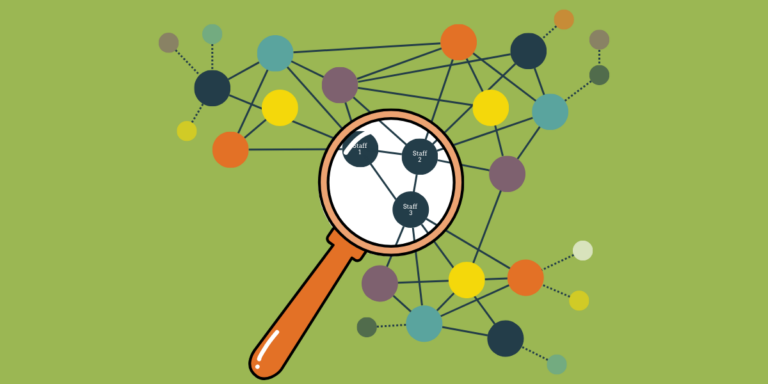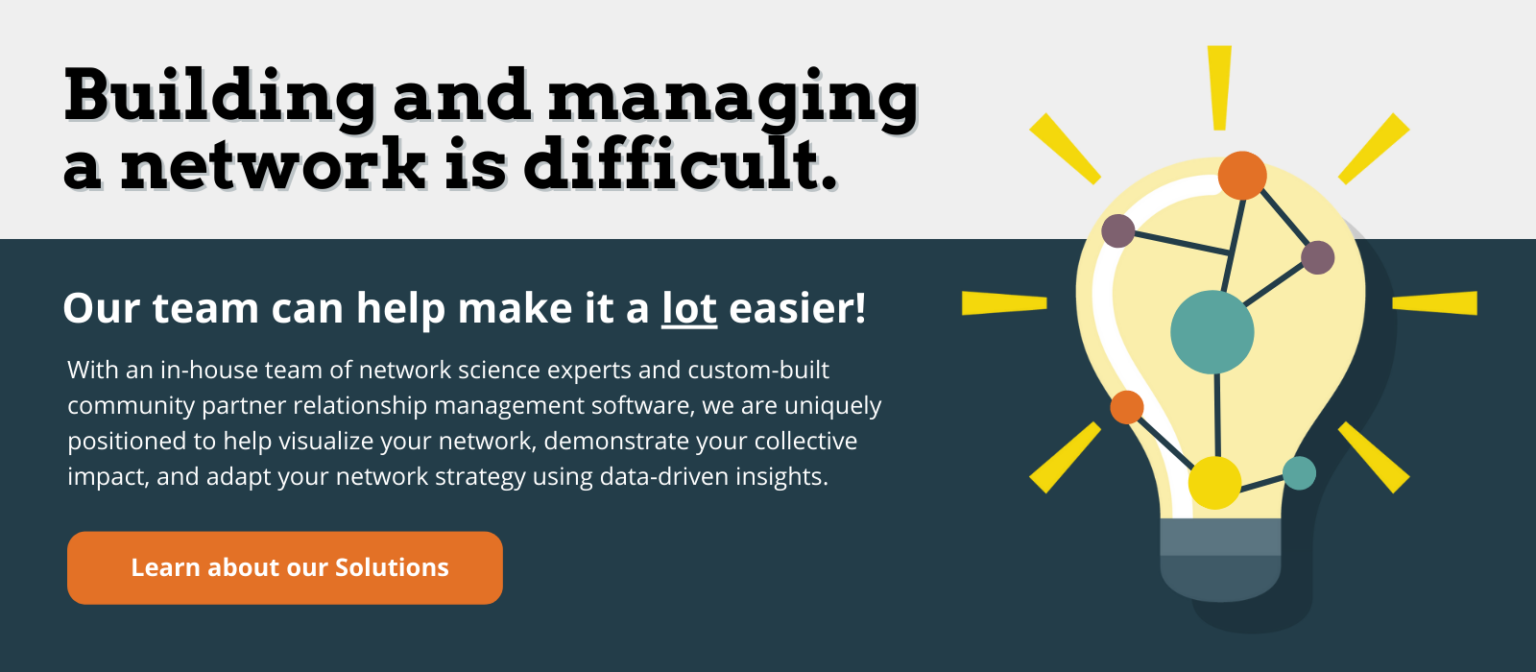One of the most significant new updates in the PARTNER CPRM 2.0 platform is the Ecosystem Management system. This framework goes beyond being just a feature and instead reorganizes how projects, networks, and data are stored and managed within the platform. The goal is to optimize it for ecosystem mapping and tracking over time. The system is robust and flexible, allowing it to be adapted to numerous use cases for organizations across all three sectors. In this update, we will explore how the system works and provide examples of its various applications.
Table of Contents
From Project Management to Ecosystem Management
Previous versions of PARTNER were based on project management. Users operated within individual projects created for each account. Within a project, you could add network members, share surveys, map and analyze the results, and export your data.
The new PARTNER 2.0 platform has been reorganized and redesigned based on an ecosystem management framework. This framework offers flexibility, adaptability, and long-term usability. Here’s an overview of how it works.
Ecosystem Management with PARTNER CPRM
Each CPRM account is now based around an ecosystem, not a project.
What is an ecosystem? Ecosystems are diverse, and the word is often used differently in different contexts. To us, an ecosystem is a network of networks, each containing organizations, individuals, and other stakeholders connected by a common issue of community importance.
For example, the Community Health ecosystem includes healthcare organizations, public health agencies, housing groups, transportation systems, researchers, providers, patients, their families, advocates, and policymakers – just to name a few.
PARTNER CPRM 2.0 is designed to make mapping and tracking ecosystems and their sub-networks easier than ever before.
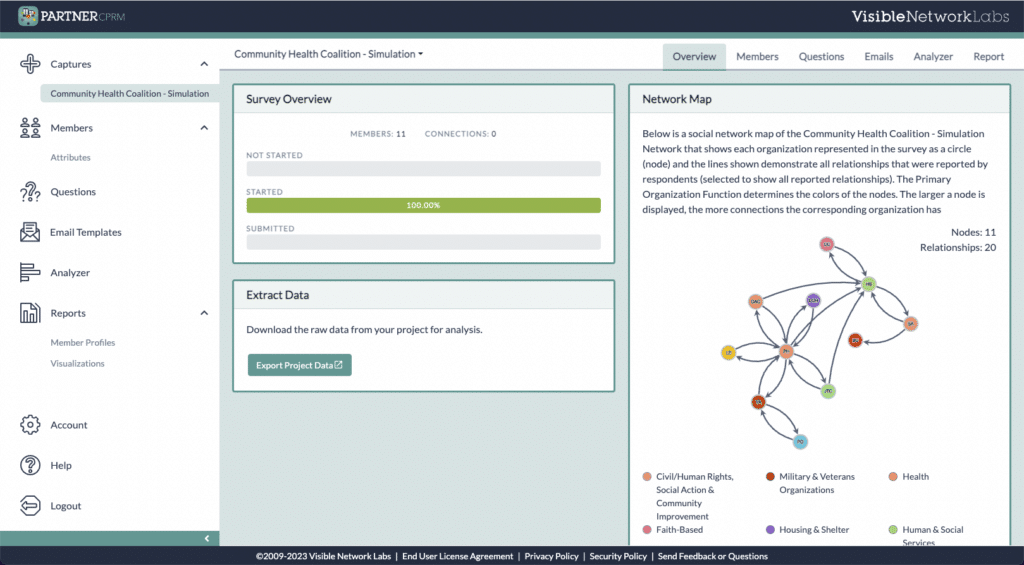
Ecosystem Level
At the ecosystem level in PARTNER CPRM, you add ecosystem members, create questions for your question bank, write email templates, and design report visualizations that can be used across the sub-levels of your account.
Within your ecosystem, users can now create unlimited ‘captures’ to record information from a network or partner interaction. Each capture is used to collect relational data about a bounded set of partners, stakeholders, or community members at one point. This can be analyzed within that network or within the broader Ecosystem-level Network Analyzer.
Network Level
Users select a set of partners, questions, and templates and can then send a targeted survey to collect relational data on their interactions and connectivity. This helpful, unique tool can help you implement multiple different use cases. Here are three examples:
- Evaluating and tracking your network over time
- Recording interactions or meetings with partners
- Implementing ‘network of network’ style projects
Example: Tracking Your Department’s Community Partners
Consider a Public Health Department that has numerous ongoing partnerships across its programs and divisions. They are aware that some partners are being overburdened as they work with multiple divisions, while other areas in the community have gaps in partnerships. However, with a department of 200 people and seven divisions, it is impossible for them to identify all the gaps and opportunities.
To address this, the department can utilize PARTNER’s ecosystem management system. First, they need to collaborate with their divisions to compile an inventory of all community partner relationships and add them to the CPRM ecosystem. Next, each staff member should be given an account to record their interactions with community partners. Whenever a staff member engages with one or more partners, such as attending a meeting together, co-hosting an event, or sharing a resource, they can easily document it and gather relational data.
By aggregating this data at the ecosystem level, the department can gain valuable insights into their partner interactions throughout the organization. This includes identifying partners who are being overburdened and pinpointing areas where there are gaps in connectivity.
Example: Implementing a Network of Networks Evaluation
Many programs today are structured as a network of networks, where peer-learning groups, associations, or coalitions come together periodically to form larger learning communities or networks. Typically, evaluating these programs and initiatives is difficult and time-consuming due to their multiple levels and data types.
Ecosystem Management makes that a thing of the past. You can create a capture for each sub-network in your project to collect data on their connections and interactions. At the ecosystem level, these networks can be compared, contrasted, and combined to visualize and analyze them in countless ways. All maps and visualizations can be added to reports for seamless sharing of your findings and insights.
When you want to repeat your evaluation for a future time series, all your questions and member data is there ready to continue and pick up where you left off.
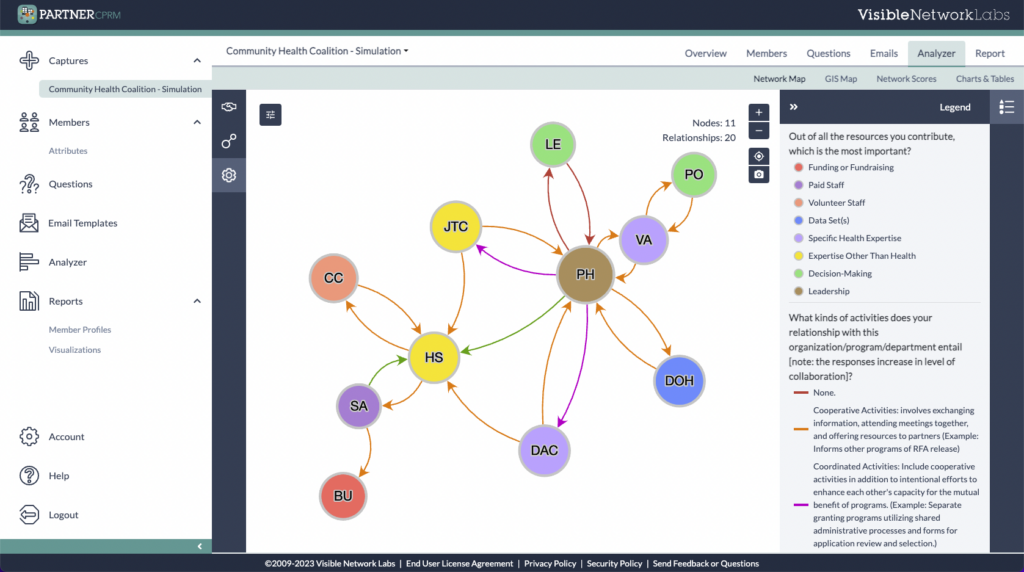
Ecosystems: A Framework for the Future
This framework is just a starting point. Over the coming months and years, we will continue to roll out new features and capabilities for ecosystem mapping and network analysis. This new system is an exciting foundation that provides multiple different avenues for analyzing and mapping dynamic data across various levels of your ecosystem.
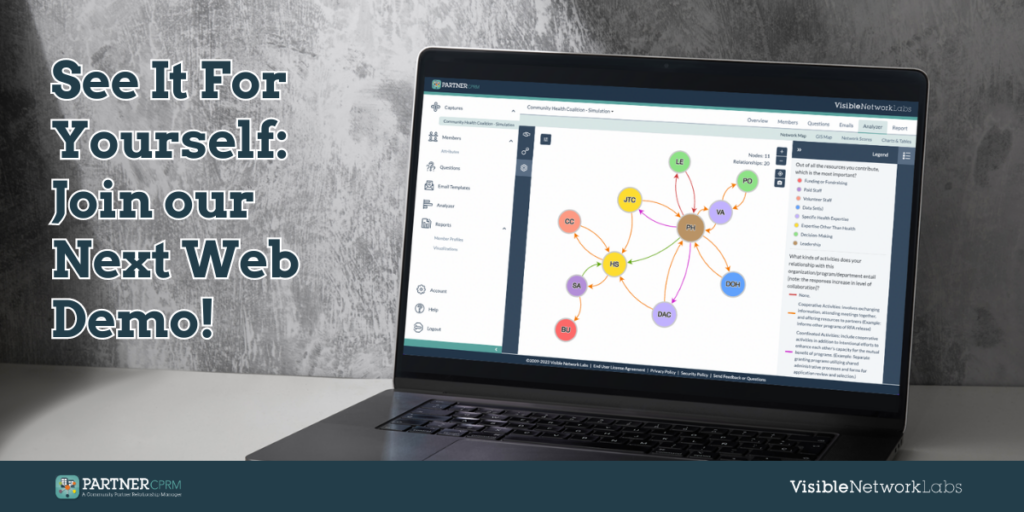
See it Yourself: Request a CPRM Demo
Don’t watch from the sidelines: Get involved. Reach out to talk to a network scientist about PARTNER CPRM 2.0 and see what it could help do for your network of community partners. With a data-driven network strategy, the sky is the limit!
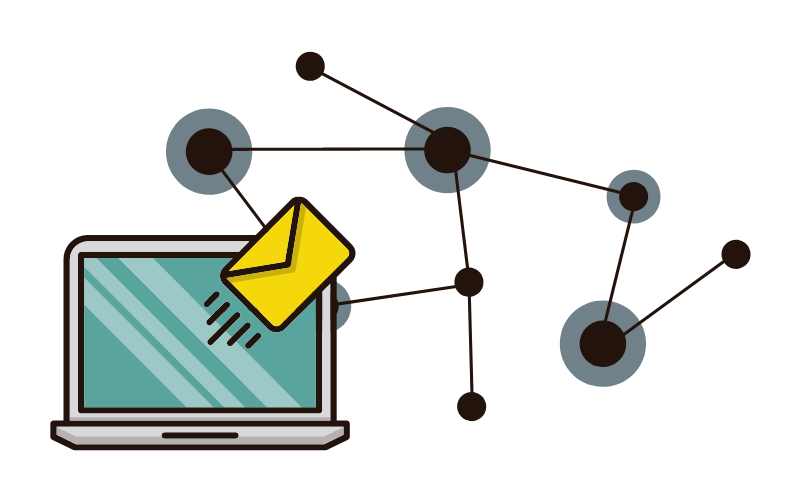
Get our monthly newsletter with resources for cross-sector collaboration, VNL recommended reading, and upcoming opportunities for engaged in the “network way of working.”
Work with our Team: Learn More!
At Visible Network Labs, we are always eager to delve deeper, explore further, and collaborate more effectively. If you’re interested in learning more about our work or how network science can benefit your organization, please reach out to us.

As Director of Marketing and Communications, Alex leads our website content creation, as part of his overall role creating and implementing our marketing and communications strategy. With real-world experience building and leading cross-sector coalitions for policy change, Alex focuses on helping others leverage network science to achieve more together.
